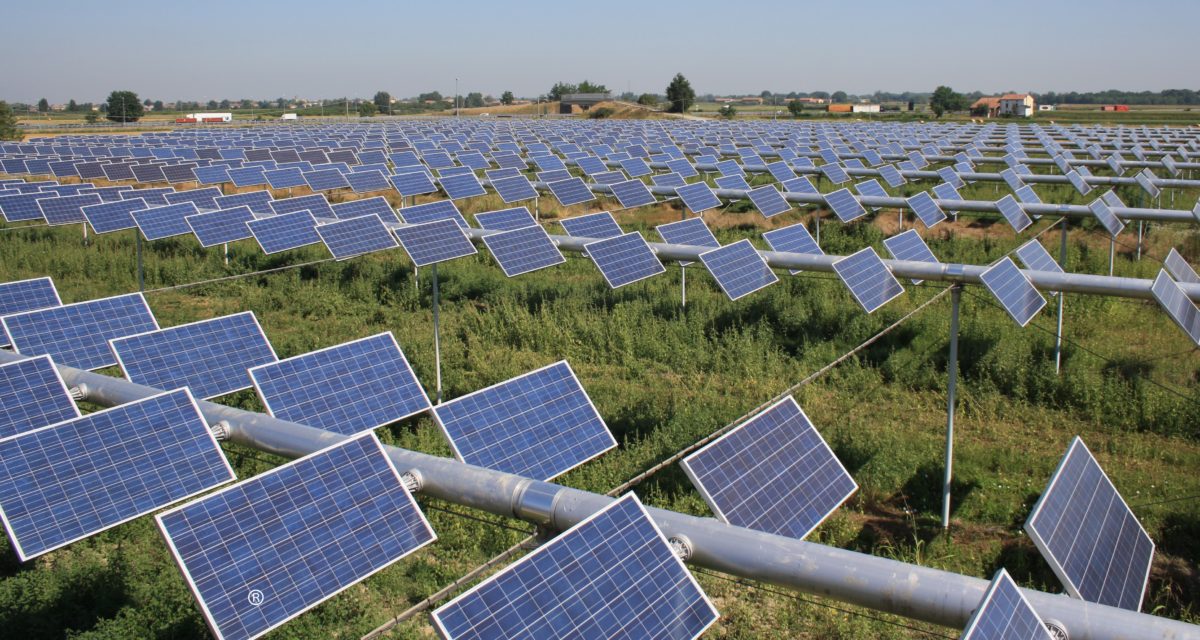Italy-based Rem Tec has developed Agrovoltaico T2.1, a 6-meter mounting structure for agrivoltaic projects that enables the use of agricultural machines.
The structure features two vertical poles, spaced at a distance of 14 meters. It can be equipped with a single-axis or double-axis tracking system, which produces a dynamic, controlled shadow on the ground.
“The shadow precision on the ground, as well as shadow dynamics, increase with the rotation degree,” a company spokesperson told pv magazine. “The control system can move the PV modules in different configurations, the shadow is maximum when the modules are perpendicular to the sun, but they can also rotate to let full light on the ground. This is particularly important for certain crops during the flowering phase.”
The structure's horizontal steel profile is able to rotate around its axis and can host four smaller profiles mounted perpendicular to the horizontal axis, which are also able to rotate around their axes. Each of the four profiles can host up to six bifacial panels, with the entire horizontal profile reaching 24 modules. The distance between the solar panel rows can vary between 12 meters and 18 meters.
“Each horizontal structure may host between 13 kW and 17 kW of solar modules,” the spokesperson said. “This would correspond up to between 600 kW and 800 kW per hectare, depending on the PV modules nominal power, the distance between the row,s and the needs of the crops.”
Rem Tec claims the new structure is ideal for flat surfaces with a maximum slope of 3%.
“Our system makes it possible the dynamic control of the shadow, which in turn reduces the hydric stress of the plantation underneath,” the spokesperson said. “We are also currently developing a mono-axial tracker for higher slopes, up to 12%.”
Rem Tec is currently conducting extensive research on several crops at different geographical latitudes.
“We know that most of the crops can have a real benefit from the shadow, such as salads and cabbage, red fruits, grapes, corn and many others, while some crops depend on the environmental condition and latitude of the plant,” the spokesperson added. “In general, when designing the plant, we start from the needs of the crops and adapt the layout accordingly, for example by changing the distance between the rows to change the shadow ratio. Our target is to keep the crop production yield on average minimum on the same level as an open field for several years, or even to increase it.”
The company recently announced plans to cooperate with Portuguese energy company Galp on the installation of a pilot plant at a vineyard in Lisbon.
“This new facility will be operational in the first quarter of 2023,” the spokesperson said.
This content is protected by copyright and may not be reused. If you want to cooperate with us and would like to reuse some of our content, please contact: editors@pv-magazine.com.




1 comment
By submitting this form you agree to pv magazine using your data for the purposes of publishing your comment.
Your personal data will only be disclosed or otherwise transmitted to third parties for the purposes of spam filtering or if this is necessary for technical maintenance of the website. Any other transfer to third parties will not take place unless this is justified on the basis of applicable data protection regulations or if pv magazine is legally obliged to do so.
You may revoke this consent at any time with effect for the future, in which case your personal data will be deleted immediately. Otherwise, your data will be deleted if pv magazine has processed your request or the purpose of data storage is fulfilled.
Further information on data privacy can be found in our Data Protection Policy.